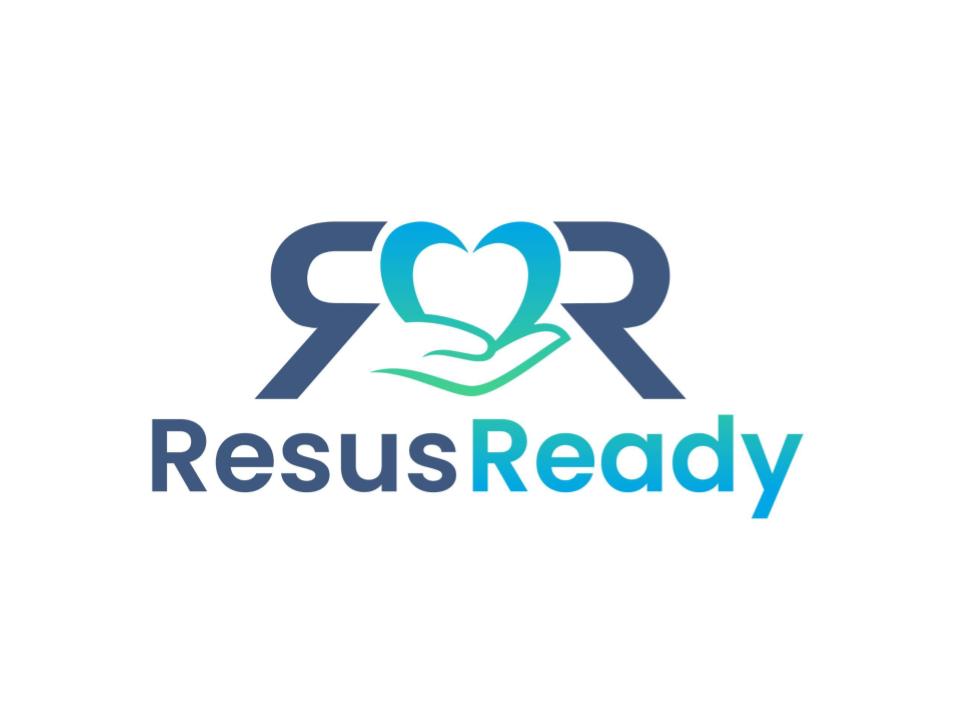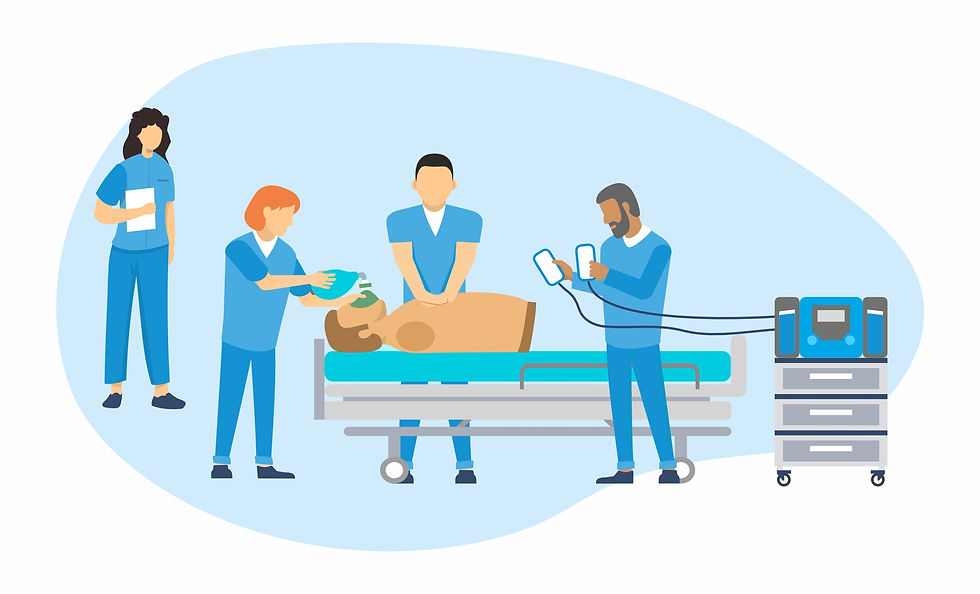Master Advanced Resuscitation Techniques with ACLS and BLS
- ResusReady

- Aug 5
- 4 min read
When a patient’s life hangs in the balance, every second counts. Knowing how to respond quickly and effectively can make the difference between life and death. That is why mastering advanced resuscitation techniques is essential for healthcare professionals. These skills go beyond basic first aid and require specialized training in both Advanced Cardiovascular Life Support (ACLS) and Basic Life Support (BLS).
In this post, I will walk you through the key aspects of these life-saving techniques. I will explain why they matter, how they complement each other, and how you can gain confidence through practical training. Whether you are refreshing your skills or learning for the first time, this guide will help you understand the essentials of resuscitation in a clear and straightforward way.
Understanding Advanced Resuscitation Techniques
Advanced resuscitation techniques involve a set of procedures and interventions used to manage cardiac arrest, respiratory failure, and other life-threatening emergencies. These techniques build on the foundation of basic life support and include the use of medications, advanced airway management, and cardiac monitoring.
ACLS focuses on the recognition and treatment of cardiac arrest, stroke, and other cardiovascular emergencies. It teaches healthcare providers how to interpret electrocardiograms (ECGs), administer drugs like epinephrine, and perform advanced airway procedures such as intubation.
BLS, on the other hand, covers the essential skills of cardiopulmonary resuscitation (CPR), use of automated external defibrillators (AEDs), and basic airway management. It is the first step in the chain of survival and is critical for all healthcare workers.
Both ACLS and BLS are designed to improve patient outcomes by ensuring timely and effective intervention. Mastering these techniques requires hands-on practice and a clear understanding of the protocols.

Why Advanced Resuscitation Techniques Matter
In emergency situations, the ability to act quickly and correctly is vital. Advanced resuscitation techniques provide healthcare professionals with the tools and knowledge to stabilize patients and prevent further complications.
For example, during a cardiac arrest, early defibrillation combined with high-quality CPR can significantly increase survival rates. ACLS training teaches how to recognize different cardiac rhythms and decide when defibrillation or medication is needed. This knowledge can save precious minutes and improve the chances of recovery.
Moreover, advanced airway management skills ensure that patients receive adequate oxygenation. This is crucial in cases of respiratory failure or when the patient is unconscious. Proper ventilation techniques reduce the risk of brain damage and other complications.
In practical terms, these skills empower healthcare providers to handle complex emergencies confidently. They also promote teamwork and communication, which are essential during high-stress situations.
If you want to enhance your skills, consider enrolling in acls and bls courses. These courses offer hands-on training and up-to-date guidelines tailored for healthcare professionals in the greater Vancouver area.

Is BLS Needed if I Have ACLS?
This is a common question among healthcare providers. The short answer is yes. Even if you have ACLS certification, BLS skills remain fundamental.
BLS forms the foundation of all resuscitation efforts. It includes immediate recognition of cardiac arrest, activation of emergency response, and high-quality CPR. These steps are critical before advanced interventions can be applied.
ACLS builds on BLS by adding advanced skills, but it does not replace the need for basic life support. In fact, ACLS protocols assume that BLS is performed correctly and promptly. Without effective BLS, the benefits of ACLS interventions may be limited.
For example, if a patient collapses, starting CPR immediately (a BLS skill) is essential. Waiting for advanced airway equipment or medications could waste valuable time. Therefore, maintaining proficiency in BLS ensures that you can provide continuous care until ACLS measures are available.
In summary, BLS and ACLS are complementary. Both are necessary for comprehensive resuscitation care. That's why ResusReady offers BLS certification for free with all of its ACLS courses!

Practical Tips for Mastering Resuscitation Skills
Mastering advanced resuscitation techniques requires more than just theoretical knowledge. Here are some practical tips to help you improve your skills:
Regular Practice - Skills like CPR and airway management degrade without practice. Schedule regular sessions to refresh your techniques.
Simulated Scenarios - Participate in realistic simulations that mimic emergency situations. This helps build confidence and decision-making skills.
Stay Updated - Guidelines for resuscitation change based on new research. Keep up with the latest protocols from organizations like the Heart and Stroke Foundation of Canada. In fact, new guidelines are coming in Fall/Winter 2025!
Work as a Team - Resuscitation is rarely a solo effort. Practice communication and role delegation with your colleagues.
Use Quality Equipment - Familiarize yourself with the devices used in your workplace, such as AEDs, defibrillators, and airway tools.
Seek Feedback - After training or real events, review your performance and identify areas for improvement.
By following these tips, you can maintain readiness and improve your ability to save lives.
Building Confidence Through Training in Vancouver
Choosing the right training provider is crucial. Practical, hands-on courses tailored to your needs make a big difference. In the greater Vancouver area, ResusReady offers engaging and effective acls and bls courses designed specifically for healthcare professionals.
Our courses focus on real-world scenarios and emphasize skill retention. You will learn from experienced instructors who understand the challenges faced in clinical settings. The training environment encourages questions and active participation.
Investing in quality resuscitation training not only enhances your skills but also boosts your confidence. When you know what to do and how to do it, you can respond calmly and effectively in emergencies.
Taking the Next Step in Your Resuscitation Journey
Mastering advanced resuscitation techniques is a continuous process. It requires commitment, practice, and the right training. By combining BLS and ACLS skills, you equip yourself to handle critical situations with competence and care.
If you have not yet taken formal training or need to renew your certification, consider enrolling in acls and bls courses. These courses will prepare you to act decisively and save lives.
Remember, every moment counts in an emergency. Your knowledge and skills can make all the difference.
Stay prepared, stay confident, and keep learning.




Comments